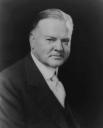March 21, 2007
Commentary on Photo Essay Experience
When we were first notified of the assignment, I had a hard time deciding what topic I should write about in my photo essay. At first, I thought that I could write about the Holocaust since there are several images from that event. However, as I began my research I realized that there were many pictures to choose from that tell several different aspects of the Holocaust that I would not be able to write a thorough story of this particular event in history with only five images. Therefore, I decided to write about the Great Depression and focus on the period when Herbert Hoover was president. In order to write my story I knew that I would need a picture of the president, which was easy to find. Since Hoover’s presidential library had restrictions on their photos I chose to use the pictures published in Wikipedia’s page on president Hoover. Read the rest of this entry »
Photo Essay ~ Hoover & The Great Depression
From 1929 up to the Second World War, Americans experienced what most consider the worst economic Depression in U.S. history. Many blame President Hoover for causing the shift from the Roaring Twenties⎯ an era of Jazz, flappers, new technologies, economic prosperity and Henry Ford’s Model T automobile ⎯to the period known as the Great Depression of the 1930s. Several photographs captured during that period demonstrate the agony and despair that Americans experienced from the onset of Hoover’s presidency up to the presidential election of Franklin Delano Roosevelt. Although the depression and Americans’ struggles to survive did not end until WWII, FDR’s New Deal offered Americans the aid that President Hoover failed to provide. Images speak louder than words, and the following pictures demonstrate the neglect that Americans experienced and felt during Hoover’s presidency.
 Photo Credit: Wikipedia, Herbert Hoover
Photo Credit: Wikipedia, Herbert Hoover
In 1928, Americans elected Herbert Hoover as the 31st President of the United States. Hoover’s election came at a time when Americans witnessed a period of economic boom, higher wages and soaring business profits. President Hoover was to continue America’s economic prosperity; however, soon after Hoover took office the period of the Roaring Twenties would come to an end, and the President’s choices would either bring the U.S back to that period or lead Americans to struggle for life. Read the rest of this entry »
March 7, 2007
Lower East Side Tenement Museum – Website Review
The goal of a public historian is to represent history to audiences outside of the academic arena through a variety of methods that allow the public to make their own interpretations of the past. For decades, public historians have provided their audience historical accessibility through museums, films, historic houses/sites and memorials. However, as useful as these mediums might be for providing history to the public, getting to these sites may prove difficult for a variety of people. Several factors affect the audiences’ decision to visit a museum or historical site. Therefore, for those who are unable to get to the site due to physical or financial complications, public historians have found a solution to provide these audiences access to the past.
The Internet has proven an extremely useful tool for public historians, since it helps bring history into people’s homes. Furthermore, the web allows the audience to share the same experience that people who are able to tour museums or historic sites face throughout their visit. Several museums as well as historic sites have developed websites where people are able to view exhibits, collections and shop at the online store. Some museums, like the Lower East Side Tenement Museum’s website highlighted in this review, include virtual tours that allow people to participate in the full museum experience. However, in order for this museum to succeed, it should offer the audience easy navigation, beneficial content, scholarship, great presentation and media. Read the rest of this entry »